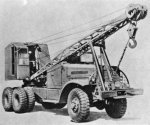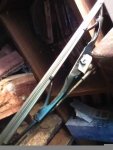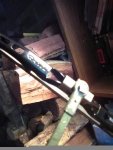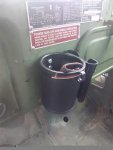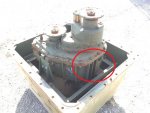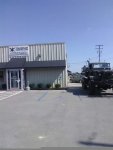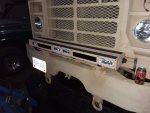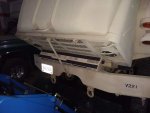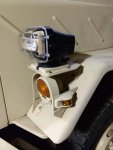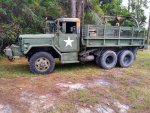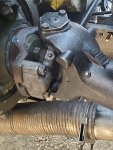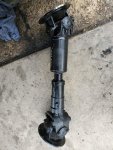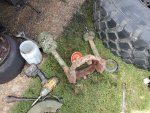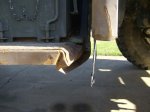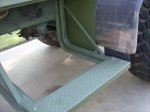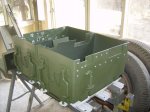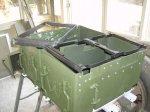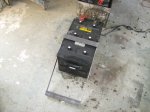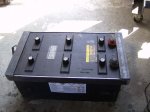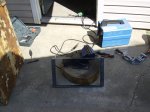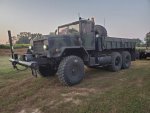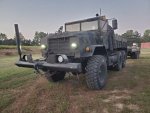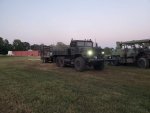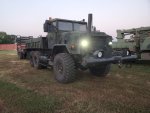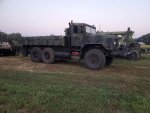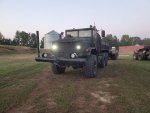Wes,
After following your posts you should know that I have nothing but respect for you, so don't think I'm dissing your advice. I'm sorry if my earlier post sounded melodramatic. I made it sound like I'm bumbling along when I actually have a plan. Let me give you a little more detail on that:
First, the transmission jack *is* a rolling, creeper type. In fact, it's sturdier and safer than using a creeper made for a human, to roll an 800lb. transfer case around on. The style is similar to the transmission jack pictured in the -20 TM and it's rated for 2,000 lbs. I took careful measurements and the cradle will easily reach the transfer case. I won't be anywhere under or near the transfer case when it's time to lower or raise it.
I hear what you're saying about the quality of civvy, Chinese made tools these days and that thought did enter my mind. It's why I've oversized the jack for 1 ton and engine hoist to 2 tons when the transfer case only weighs 800 lbs. I've also talked to 2 other fellows who recommended this jack, saying that it made swapping the transfer case a safe job when they used it.
Here's some good news: After I made my post last night, I was contacted by a heavy truck mechanic for the county, who lives right around the corner from me. He works on fire trucks and garbage trucks for the county and also helps MV hobby owners fix their trucks. He has offered to help me with the whole job, including access to tools if the need arises. We discussed the entire job at length.
Just to reiterate- Once the jack is raised and the transfer is chained/strapped to the jack, NO ONE is going to be anywhere near or under the transfer case when it is lowered. Once the transfer is lowered, we can rotate the cradle 90 degrees for removal through the side of the truck as the TM says to do. Once the transfer has been wheeled out from under the truck, we'll use the 4,000 lb. engine hoist to shuttle the old transfer off the jack and the new transfer onto the jack and reverse the process.
If at any time, something seems unsafe, or if the equipment isn't meeting the requirements in terms of safety, reach or mobility, I will stop the job and regroup. I realize there are a lot of ways to skin the same cat and I'll definitely discuss your method with the assisting mechanic before we start.
After following your posts you should know that I have nothing but respect for you, so don't think I'm dissing your advice. I'm sorry if my earlier post sounded melodramatic. I made it sound like I'm bumbling along when I actually have a plan. Let me give you a little more detail on that:
First, the transmission jack *is* a rolling, creeper type. In fact, it's sturdier and safer than using a creeper made for a human, to roll an 800lb. transfer case around on. The style is similar to the transmission jack pictured in the -20 TM and it's rated for 2,000 lbs. I took careful measurements and the cradle will easily reach the transfer case. I won't be anywhere under or near the transfer case when it's time to lower or raise it.
I hear what you're saying about the quality of civvy, Chinese made tools these days and that thought did enter my mind. It's why I've oversized the jack for 1 ton and engine hoist to 2 tons when the transfer case only weighs 800 lbs. I've also talked to 2 other fellows who recommended this jack, saying that it made swapping the transfer case a safe job when they used it.
Here's some good news: After I made my post last night, I was contacted by a heavy truck mechanic for the county, who lives right around the corner from me. He works on fire trucks and garbage trucks for the county and also helps MV hobby owners fix their trucks. He has offered to help me with the whole job, including access to tools if the need arises. We discussed the entire job at length.
Just to reiterate- Once the jack is raised and the transfer is chained/strapped to the jack, NO ONE is going to be anywhere near or under the transfer case when it is lowered. Once the transfer is lowered, we can rotate the cradle 90 degrees for removal through the side of the truck as the TM says to do. Once the transfer has been wheeled out from under the truck, we'll use the 4,000 lb. engine hoist to shuttle the old transfer off the jack and the new transfer onto the jack and reverse the process.
If at any time, something seems unsafe, or if the equipment isn't meeting the requirements in terms of safety, reach or mobility, I will stop the job and regroup. I realize there are a lot of ways to skin the same cat and I'll definitely discuss your method with the assisting mechanic before we start.


